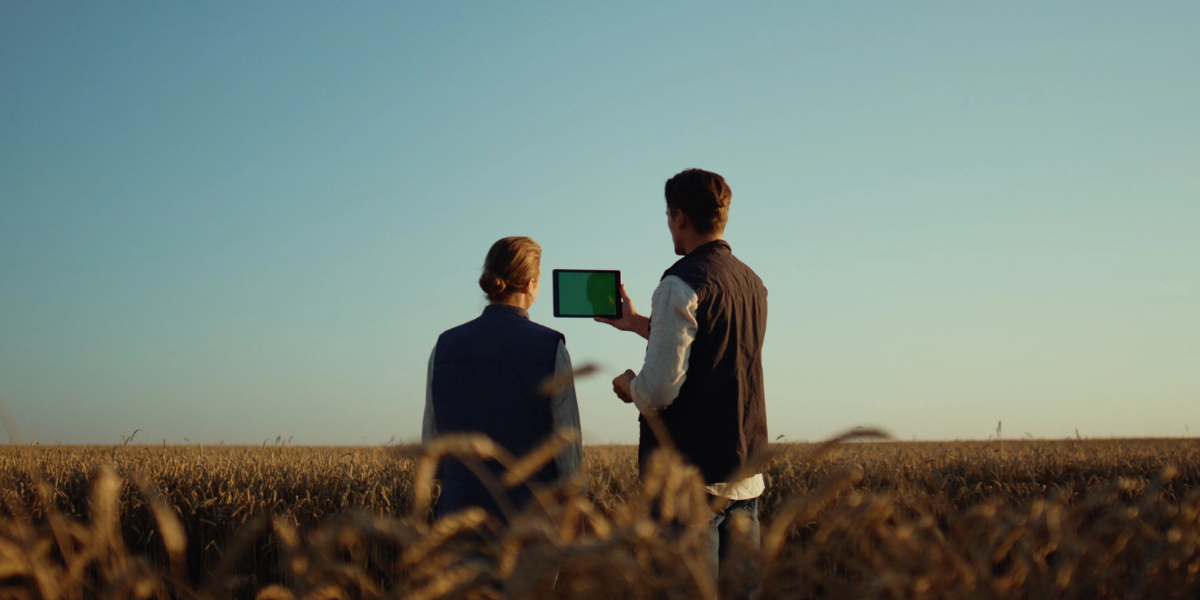In the next in our Industry Voices interview series, we hit the road with renowned animal behaviour and welfare specialist, Dr Temple Grandin, to talk about opening doors of opportunity and implementing change in the food industry.
If you google Temple Grandin, there’s one word that pops up time and time again. “Legend”.
If you consider the animal behaviourialist’s achievements in her 50 years in the cattle industry, it’s not hard to see why.
She’s transformed how the food industry approaches animal welfare, dealt decisively with any sexism she’s encountered, published books on how her autism has helped her see the world differently, and used the money she’s earned from industry clients such as McDonald's, Burger King and Costco to put 23 students through university in the US.
She’s even been played by Claire Danes in a film about her life.
No wonder then that she’s constantly in demand and recognised wherever she goes.
But meeting Dr Grandin is not like reading about her. And when we sit down to chat, we’ve already spent the afternoon driving through the Northern Irish countryside discussing topics including precision breeding technologies in cattle, Covid medications and the documentary Blackfish. (More on this later).
Certain things are immediately obvious. She is generous – with her time, her ideas and her resources. There is something of the cowboy about her, dressed in her regular uniform of western shirt, with a silver and red bolo tie at her throat. The initials TG etched into the silver by a friend who retired from academia to become a silversmith.

And she’s tired. It’s the second of two long days in Northern Ireland. Both nights she’s been on the phone back to the US – once to advise industry clients at 3am on octopus sentience and the other time to encourage a student to submit an already overdue paper.
And yet, when she starts talking about her life, the fatigue lifts and the stories begin. Her mischievous sense of humour apparent as she recounts key moments that shaped her life.
The passion for all things cattle-related she says dates back to her teens. “It all started with a visit to my aunt's ranch when I was 15. It was my first trip out west to Arizona and I got really interested in squeeze chutes.” That first encounter would lead to a lifelong fascination – and inform her research. It would also see her develop a ground-breaking squeeze machine that would help reduce anxiety in those with autistic spectrum disorder.
“The first thing I did was look at what cattle were seeing when they went through a chute. Nobody had thought about looking at that. But I'm a visual thinker. So, it's obvious to me to look at what cattle would see.
"The first thing I did was look at what cattle were seeing when they went through a chute. Nobody had thought about looking at that. But I'm a visual thinker."
“I didn't know at the time that other people thought verbally. So, it wasn't so obvious to other people to look at why a shadow would make cattle refuse to go through the chute. So, when I started out at Arizona State University, I went around every feed yard, to see how cattle would work in the different facilities.”
There is a steely confidence about Grandin, a self-belief that her way is the right way (history has proved her correct here). But it must have made things interesting for her in her twenties when telling a male-dominated industry that they needed to change their system. But even back then she had a plan.
“I knew that if I could get my ideas printed then more people would listen. So, I jumped on the opportunity to write for our state farm magazine in Arizona. I went to a cattle event and the editor was there, and so I went up to him and got his card.
“That's an example of seeing a door of opportunity,” she adds. This phrase is a favourite of Grandin’s. It appears time and time again in interviews with her, and is one that describes her approach to getting things done.
She continues, “I remember calling him up afterwards and saying I'd like to do an article on my Master’s thesis - I had done a survey on how cattle behaved in different types of squeeze chutes - and he said, yes, and I sent it in and they published it. Then I came back to them and said I'd like to do a column for you every month. So, then I wrote something up every month. And after about six months they asked me to be livestock editor.”
It was a role created for Grandin and one she would stay in for seven years. “The writing gave me access to all kinds of places.” She very quickly became what she describes as “a livestock kid,” running around feed yards watching how they handled cattle. And, then she was offered a part-time job with a company that built feed lots.
“I learned all about the construction and did a really good job of being livestock editor. People respected me because I very quickly got a reputation for being accurate.” She did face some resistance along the way though.
“At the time there were more women in ag [agricultural] journalism,” she says, “but there were no women working with the cattle. They were all secretaries in the office. I remember going to do my first coverage of a cattle meeting and they didn't want to let me in.”
“At the time there were more women in ag journalism, but there were no women working with the cattle. They were all secretaries in the office. I remember going to do my first coverage of a cattle meeting and they didn't want to let me in.”
But Grandin wouldn’t be turned away. “I just said, 'I'm the livestock editor for the Arizona Farmer Ranchman magazine. I want to cover your meeting' - and they finally had to let me in.”
By then she had become used to standing her ground. Several years earlier she had come back to her car to find bull testicles on the bonnet. “I was starting out in the feed yards and the feed yard foreman had put them on my car.”
She looks unfazed as she remembers, “You know, being a woman in a man's industry, it was not the guys working with the cattle who were the problem. It was not the owners. It was middle management.”
She got the best revenge though – “It motivated me to go down to the Farmer Ranchman magazine office and ask for that column,” she laughs.
A lot has changed in the industry since then – and though she won’t admit it, a great deal is down to her and her work in industry. By the eighties Grandin had designed a wave of equipment to improve animal welfare especially in abattoirs – it was her main focus. But while it made a difference, a decade later she was increasingly seeing the same problem.

“One of the things that was frustrating in the 1990s was that half the places I had equipment in didn't operate it correctly. They were breaking a lot of stuff and not fixing it. Then in 1999, I started doing audits with McDonald's using a very simple scoring system.”
The process she developed was straightforward. “Hung on the rail when it was unconscious. 95 percent stunned on the first shot. They had to have these outcomes, so a plant knew exactly what it had to do to pass.”
On the ground during the audits she realised why their targets weren’t being achieved. “One of the biggest problems we had was broken stunning equipment. The stun guns were simply not being maintained.”
She audited 74 plants and only had to make expensive modifications to three. Everything else she says was repairs, management and cattle handling practices. “I had expensive equipment to sell, but I took a reverse conflict of interest approach. I bent all the way backwards not to sell it to them.”
One of the reasons why her abattoir audit worked was it was based around five simple things. “Think of driving as a model,” she says. “If you only enforce five things you probably get a device to test the breath, speeding, stopping violations, seat belts and texting. If you just enforce those five things, you probably get most of your public safety. In food safety, we call these critical control points.
“It was hard for some people to understand how I could just measure five simple things and it work so well. But you have to pick the right five things, I mean stunning is a no-brainer. Unconscious when you hang it up. So, a no-brainer. But one of the scores that worked really well was the vocalisation score. You scored an animal silent or if it mooed in the stun box. If it’s mooing its head off, then something bad is happening.”
It’s one of the things she’s most proud of in her career. “The scoring system and then implementing it with McDonald’s was one of the things that made the biggest change. McDonald's was the pioneer. Then Wendy's came on board and I taught them the exact same system and then Burger King came in too.
“So, I had three major big companies all using the same scoring system and the plant knew exactly what they had to do. It was very, very clear.”
The difference was immediate. “In 1999, I saw more change than I'd seen in my entire career, because now they had to manage these plants, make these outcomes and have no acts of abuse. Before that animal welfare just wasn’t part of the conversation.”
"I saw more change than I'd seen in my entire career, because now they had to manage these plants, make these outcomes and have no acts of abuse. Before that animal welfare just wasn’t part of the conversation.”
No wonder then she doesn’t believe legislation is the answer. “I tried it and it takes too long. So, by the eighties I’d pretty much given up on that.” She considers shifting ideas and approaches in industry to be far more effective.
“What I’ve found is people want the magic thing. It could be a piece of equipment, a computer, a drug or something like that. A magical thing that's going to be automatic. But those things don't replace management. In fact, one of the mistakes I made in the 1970s is I thought I could design a self-managing cattle handling facility. There's no such thing as that. You can have well-designed cattle-handling facilities that work better than poorly designed ones, but you still have to have people that know how to handle cattle and do it right.”
For Grandin it’s all about finding the right balance. “Some people think they're going to solve all their problems with technology. They’re not. Think about when the internet was being put in the schools. They thought it was going to make the schools absolutely wonderful. But did it replace teaching? No. You see that's the management side of it.
“And that's a very common thing. People now think AI is going to like fix everything. Yes, it'll be useful, but it's not automatic management. It's still got to be people who drive everything.”
She strives to find that balance too between her academic and industry commitments – and it’s when the two collaborate that change comes. Always looking and listening to new ideas, during her visit to Queens University Belfast and Foyle Food Group's Farm of Excellence she has learned about a new scheme to use sustainable willow combined with clover as forage to reduce methane in cattle. It’s an idea she finds fascinating. “I’m going to write a paper about that,” she says.
On the farm she takes pictures and asks questions, impressed by what she sees, interested in how the Northern Irish agri-food system is different and keen to pass on her learnings from visiting farms in Canada and the US. A big worry for her is precision breeding technologies in cattle – in the US she’s recently witnessed a four-month-old calf with terrible twisted feet and was horrified, knowing it was preventable. The genetic trait must have come from the bull, she explains, because at that age the calf can’t have been exposed to anything that would cause it.

It annoys her because instances like this are preventable. She cites the story of Tilikum the killer whale, the subject of the documentary Blackfish, as a case in point. “That orca killed three people and they still bred from him.”
It’s an extreme tale, but also one that resonates when some are turning to genetic engineering to increase yields, producing heavier cattle that end up as steaks so large they don’t fit on a regular plate. It’s something she’s fighting against.
In the end it comes back to finding that balance again – and making sure that the experts on the ground care about the cattle and the industry. “You have to have people that care about doing it right,” she says.
And you don’t have to be a visual thinker to see that, but it helps.

If you'd like to discover more interviews in our Industry Voices series, you can read them here.
.jpg)
Greer McNally
Greer has over 15 years’ experience writing about trends in the food and retail sectors. She lives in a little village by the sea in Northern Ireland and loves creating content that informs how people think about the food industry. A recent career highlight was interviewing the legend that is Dr Temple Grandin.
Stay up to date
Stay up to date
Browse Posts
- December 2025
- November 2025
- October 2025
- September 2025
- August 2025
- July 2025
- June 2025
- May 2025
- April 2025
- March 2025
- February 2025
- January 2025
- December 2024
- November 2024
- October 2024
- September 2024
- August 2024
- July 2024
- June 2024
- May 2024
- April 2024
- March 2024
- February 2024
- January 2024
- December 2023
- November 2023
- October 2023
- September 2023
- August 2023
- July 2023
- June 2023
- May 2023
- April 2023
- March 2023
- December 2022
- November 2022
- October 2022
- September 2022
- August 2022
- July 2022
- June 2022
- May 2022
- April 2022
- March 2022
- February 2022
- January 2022
- December 2021
- November 2021
- October 2021
- August 2021
/Blog%20Headers/Temple%20Grandin.jpg)
/Blog%20Headers/shutterstock_1927957907%20(1).jpg)
/Blog%20Headers/shutterstock_1845178195%20(2).jpg)
/Blog%20Headers/shutterstock_2473376713.jpg)
/Blog%20Headers/shutterstock_2133827717%20(1).jpg)
/Blog%20Headers/shutterstock_2247276303.jpg)
.png)
.png)



/Blog%20Headers/shutterstock_2362078849.jpg)

/Blog%20Headers/Malachy%20O%20Connor.png)
.png)
/Blog%20Headers/shutterstock_1800794020.jpg)
.png)
/Blog%20Headers/Year%20in%20Review_2024.png)
/Blog%20Headers/shutterstock_2119408661.jpg)
/Blog%20Headers/Headshot%20B%26W.jpg)